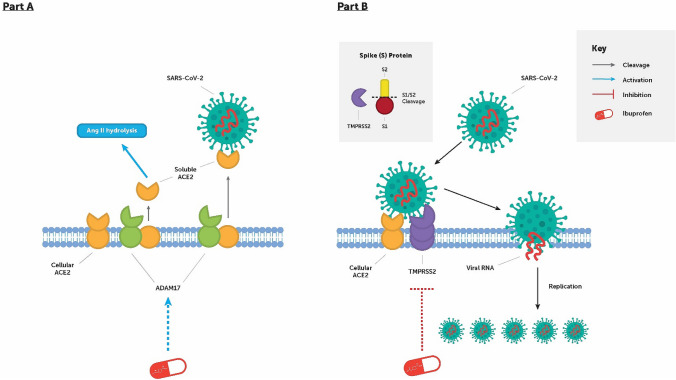Fig. 2.
a The entry of severe acute respiratory syndrome coronavirus-2 (SARS-CoV-2) into cells is mediated by the binding of the viral spike (S) glycoprotein to membrane-bound angiotensin-converting enzyme 2 (ACE2). ACE2 levels on the plasma membrane are regulated by the metalloproteinase ADAM-17, which promotes shedding of ACE2 with its active N domain into the circulation. The cleaved portion of ACE2, which does not contain the membrane-bound domain necessary for viral entry into the cell, may act as a decoy for the viral spike proteins. It is hypothesised that ibuprofen may be able to activate ADAM-17 and thus prevent membrane-bound ACE2-dependent infection of the cell. b The enzyme transmembrane protein, serine 2 (encoded for by the TMPRSS2 gene) is necessary for the proteolytic cut at the S1/S2 site on the viral S glycoprotein for uptake into the cell and viral replication. It is hypothesised that ibuprofen may be able to downregulate expression of the enzyme, and thus prevent TMPRSS2-dependent viral entry into the cell

